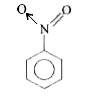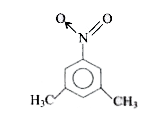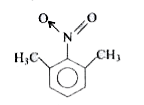To determine how many of the given groups are ortho, para directing and ring activating, we need to analyze each group based on its electronic effects on the benzene ring.
1. **-NO₂ (Nitro group)**: This group is a strong electron-withdrawing group due to its -I (inductive) effect and -M (mesomeric) effect. It deactivates the ring and directs substitution to the meta position.
- **Conclusion**: Not ortho/para directing, not activating.
2. **-CN (Cyano group)**: Similar to the nitro group, the cyano group is also an electron-withdrawing group. It deactivates the ring and directs substitution to the meta position.
- **Conclusion**: Not ortho/para directing, not activating.
3. **-CH₃ (Methyl group)**: This group is an electron-donating group due to its +I effect. It activates the ring and directs substitution to the ortho and para positions.
- **Conclusion**: Ortho/para directing, activating.
4. **-OH (Hydroxyl group)**: The hydroxyl group is an electron-donating group due to its +M effect (resonance). It activates the ring and directs substitution to the ortho and para positions.
- **Conclusion**: Ortho/para directing, activating.
5. **-NH₂ (Amino group)**: The amino group is also an electron-donating group due to its +M effect. It activates the ring and directs substitution to the ortho and para positions.
- **Conclusion**: Ortho/para directing, activating.
6. **-OR (Alkoxy group)**: Alkoxy groups (like -OCH₃) are electron-donating due to their +M effect. They activate the ring and direct substitution to the ortho and para positions.
- **Conclusion**: Ortho/para directing, activating.
7. **-X (Halogens)**: Halogens (like -Cl, -Br, -I) are unique; they are weakly electron-withdrawing due to their -I effect but still donate electrons through resonance (+M effect). They direct substitution to the ortho and para positions but are considered deactivating overall.
- **Conclusion**: Ortho/para directing, but weakly activating.
8. **-CHO (Aldehyde group)**: The aldehyde group is an electron-withdrawing group due to its -I effect and does not donate electrons through resonance. It directs substitution to the meta position.
- **Conclusion**: Not ortho/para directing, not activating.
9. **-NHR (Amino group with a hydrogen atom)**: Similar to the amino group, this is also an electron-donating group due to its +M effect. It activates the ring and directs substitution to the ortho and para positions.
- **Conclusion**: Ortho/para directing, activating.
Now, summarizing the findings:
- Ortho/para directing and activating groups: **-CH₃, -OH, -NH₂, -OR, -X, -NHR** (6 groups)
- Not ortho/para directing and not activating: **-NO₂, -CN, -CHO** (3 groups)
**Final Answer**: There are 6 groups that are ortho, para directing and ring activating.



